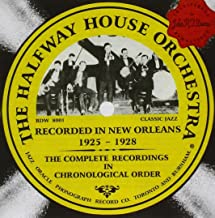
Daily Dose Of Jazz…
Abbie Brunies was born Albert Brunies on January 19, 1900 into a famous New Orleans, Louisiana family, which counted among its members George Brunies and Merritt Brunies.
Brunies was the leader of the Halfway House Orchestra from 1919 to about 1927, playing at the Halfway House club in New Orleans. This ensemble recorded for Okeh Records in 1925. Among the musicians who played in this group were New Orleans Rhythm Kings members Charlie Cordella, Mickey Marcour, Leon Rappolo, Sidney Arodin, Bill Eastwood, Joe Loyacano and Leo Adde.
>He played in New Orleans into the mid-1940s, after which time he moved to Biloxi, Mississippi. There he played with Merritt in the Brunie Brothers Dixieland Jazz Band. This ensemble recorded sparsely. Cornetist Abbie Brunies passed away in Biloxi on October 2, 1978.
More Posts: bandleader,cornet,history,instrumental,jazz,music
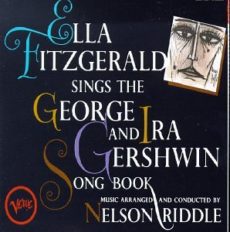
Daily Dose Of Jazz…
Ira Gershwin was born on December 6, 1896 in New York City, the oldest of four children of Moishe and Rose Gershovitz, who were Russian Jews, born in St Petersburg, and emigrated to the US in 1891. Shy in his youth, Ira spent much of his time at home reading, but from grammar school through college he played a prominent part in several school newspapers and magazines. Graduating in 1914 from Townsend Harris High School where he had met Yip Harburg, they enjoyed a lifelong friendship and a love of Gilbert and Sullivan. He went on to attend City College of New York but dropped out.
His brother George began composing and plugging in Tin Pan Alley from the age of 18, while Ira worked as a cashier in his father’s Turkish baths. It was not until 1921 that Ira became involved in the music business when Alex Aarons signed Ira to write the songs for his next show, Two Little Girls in Blue. Not to appear to trade off George’s growing reputation, he wrote under the pseudonym Arthur Francis, after his youngest two siblings. His lyrics were well received, allowing him successfully to enter the show-business world with just one show.
Later the same year, the Gershwins collaborated for the first time on a score of A Dangerous Maid, which played in Atlantic City and on tour. 1924 saw Ira officially teaming with George to write the music for what became their first Broadway hit Lady, Be Good. Once the brothers joined forces, their combined talents became one of the most influential forces in the history of American Musical Theatre. Together, they wrote the music for more than 12 shows and four films.
Their partnership continued until George’s sudden death from a brain tumor in 1937 and he waited nearly three years before writing again. Returning from this hiatus, Ira teamed up with composers Jerome Kern, Kurt Weill and Harold Arlen among others. Over the next 14 years, Ira gave his farewell to Broadway with the failure of Park Avenue in 1946. In 1947, he took 11 songs George had written but never used, added lyrics, and incorporated them into the film The Shocking Miss Pilgrim.
For the next four decades he would continue to write lyrics leaving such memorable classics as Embraceable You, I Can’t Get Started, Let’s Call the Whole Thing Off, My Ship and They Can’t Take That Away from Me, among numerous others. Lyricist Ira Gershwin passed away on August 17, 1983 at the age of 86 in Beverly Hills, California.
More Posts: lyrics
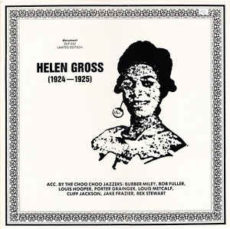
Daily Dose Of Jazz…
Sterling Bruce Conaway was born on October 26, 1900 in Washington, D.C. and learned to play the banjo and mandolin. His early career was spent playing with fellow Washingtonian Duke Ellington in their hometown. Relocated to Chicago, Illinois he joined the band of Carroll Dickerson.
He played in Cyril Fullerton’s band in 1924 and recorded with Helen Gross on ukulele. By the late 1920s he moved to Europe where he worked with Eddie South, Noble Sissle, Freddy Johnson, Freddy Taylor, and Leon Abbey. During this period in his career Sterling led several groups as well.
1936 saw him in Bombay, India playing with Crickett Smith, however, three years later returned to the United States. Banjoist and mandolinist Sterling Conaway continued to perform in big bands and leading his own groups until his passing away in November 1973.
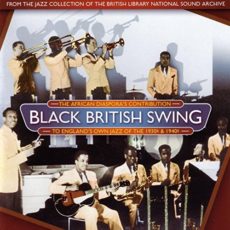
Daily Dose Of Jazz…
Cyril Blake was born October 22, 1900 in Trinidad and moved to England about 1918, where he sometimes performed under the stage name of “Midnight,” and quite often appearing well after midnight. He was an essential part of the freewheeling music scene of London in the decades both before and after World War II.
He became well versed in jazz, blasted away in rhythm & blues bands of various ethnic persuasions. and played in a British group called the Southern Syncopated Orchestra. Being a trumpet player and was working in both London and Paris clubs whilst the ’20s roared helped to skyrocket his career.
Working in Paris, France and London as a musician throughout the 1920s, in the 1930s he played in the bands of Leon Abbey, Happy Blake, Rudolph Dunbar, Leslie Thompson’s Emperors of Jazz, Joe Appleton, and Lauderic Caton. 1938 saw Cyril putting together his own band, which was centred on Jig’s Club in London but was also the house band for several other venues around Soho. He recorded several times with this ensemble and in the 1940s led his band behind Lord Kitchener for recordings on Parlophone Records, playing in a calypso style.
Late in his life he returned to Trinidad, where he continued to lead bands. Trumpeter Cyril Blake, along with Bertie King, Lauderic Caton and Brylo Ford were credited in the Who’s Who of British Jazz by John Chilton and influenced generations of British jazz musicians, passed away of an illness on December 3, 1951.
More Posts: trumpet
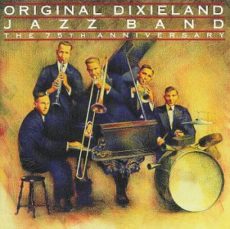
Daily Dose Of Jazz…
Antonio Sparbaro, better known as Tony Sbarbaro or Tony Spargo was born on June 27, 1897 in New Orleans, Louisiana to an immigrant Sicilian family. Early in his career he played with the Frayle Brothers Band, possibly as early as 1911 and the Reliance Band of Papa Jack Laine.
After doing side work with Merritt Brunies and Carl Randall he joined the Original Dixieland Jazz Band for their initial recordings in 1917. Tony became its leader in the 1940s and remained a member of the ensemble until its dissolution in the 1960s. At the time the band broke up he was the only founding member still in the group.
Sbarbaro composed for the group, writing the tune Mourning Blues among others. He remained a fixture of Dixieland jazz performance for most of his life, performed at the New York World’s Fair in 1941 and with Connee Boswell in the 1950s. Later in life in New Orleans he played with Miff Mole, Big Chief Moore, Pee Wee Erwin, and Eddie Condon. Quitting music in the Sixties due to the popularity of rock & roll, drummer Tony Sbarbaro passed away on October 30, 1969.

#preserving genius
More Posts: drums





